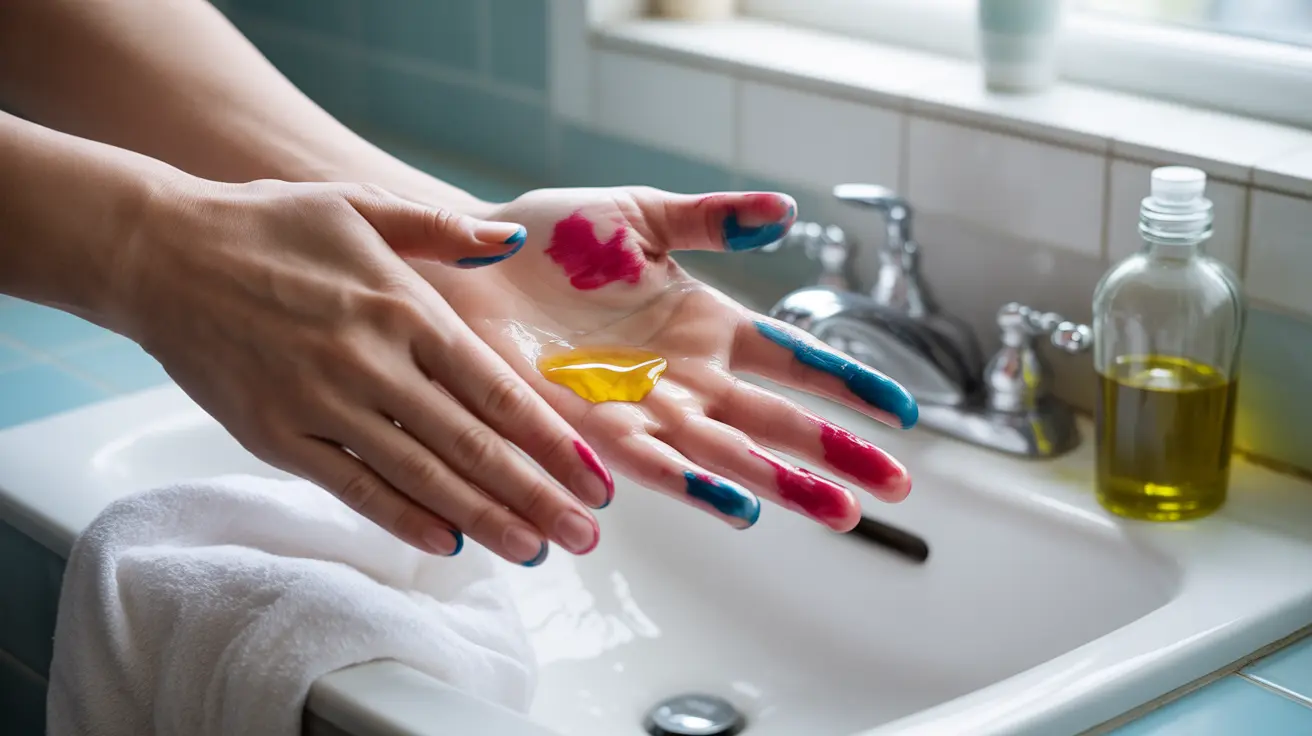Whether you're tackling a DIY project or creating art, getting paint on your skin is a common occurrence. While it can be frustrating, there are several safe and effective methods to remove paint from your skin without causing irritation or damage. Understanding the right approach based on the type of paint and how long it's been on your skin is key to successful removal.
In this comprehensive guide, we'll explore various techniques for paint removal, from gentle natural solutions to more specific methods for stubborn paint stains. We'll focus on skin-friendly approaches that protect your skin while effectively removing different types of paint.
Understanding Different Paint Types and Their Removal
Before attempting to remove paint from your skin, it's important to identify the type of paint you're dealing with. Different paints require different removal methods:
Water-Based Paint Removal
Water-based paints, including acrylic and latex, are typically easier to remove. Start with these gentle methods:
- Warm water and soap
- Baby oil for dried paint
- Gentle scrubbing with a washcloth
- Hand cream or moisturizer to help lift the paint
Oil-Based Paint Removal
Oil-based paints require more specific approaches but can still be removed safely:
- Natural oils (olive oil, coconut oil)
- Baby oil or mineral oil
- Mild soap and warm water after oil application
- Gentle circular motions while cleaning
Natural and Safe Removal Methods
Several household items can effectively remove paint while being gentle on your skin:
Kitchen-Based Solutions
- Olive oil or vegetable oil
- Mayonnaise
- Coconut oil
- White vinegar (diluted)
Gentle Mechanical Methods
- Soft washcloth
- Cotton balls
- Gentle exfoliating scrub
- Warm water compress
When to Use Specialized Products
Sometimes, natural methods might not be enough for stubborn paint. Consider these alternatives:
- Non-toxic paint removers designed for skin
- Baby oil or mineral oil
- Hand cleaning wipes specifically for paint
- Mild soap-based paint removing products
Safety Considerations and Precautions
When removing paint from your skin, keep these important safety tips in mind:
- Avoid harsh chemicals and solvents
- Test products on a small area first
- Don't scrub aggressively
- Stop if skin becomes irritated
- Moisturize after paint removal
Frequently Asked Questions
What is the easiest way to remove water-based paint from skin?
The easiest method is to wash the affected area with warm water and mild soap, using gentle circular motions. For dried paint, apply baby oil or olive oil to soften the paint before washing with soap and water.
How can I safely get oil-based paint off my skin without harsh chemicals?
Natural oils like olive oil, coconut oil, or baby oil are effective for removing oil-based paint. Apply the oil generously, massage it into the painted area, let it sit for a few minutes, then wash with soap and warm water.
Can natural oils like olive oil or mayonnaise really help remove paint from skin?
Yes, natural oils and mayonnaise are effective paint removers because they help break down both water-based and oil-based paints. Their moisturizing properties also help protect your skin during the removal process.
When should I avoid using chemical solvents for paint removal on my skin?
Avoid chemical solvents if you have sensitive skin, cuts or abrasions, or if you're removing paint from delicate areas. Also avoid them if natural methods haven't been tried first, as harsh chemicals can cause skin irritation or chemical burns.
How do I remove dried paint from skin if soap and water don't work?
For dried paint resistant to soap and water, apply a natural oil and let it soak for 5-10 minutes. Then use a soft washcloth to gently rub the area in circular motions. Follow with soap and warm water. If this doesn't work, try a specialized paint removal product designed for skin use.




